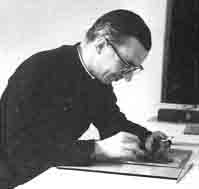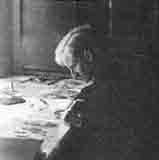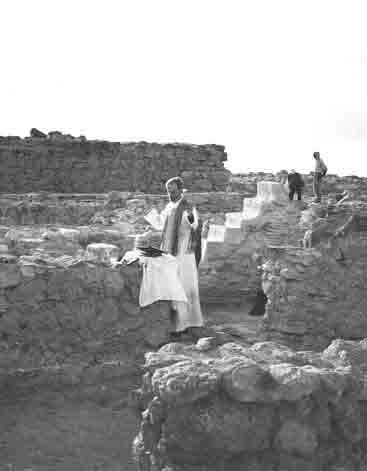
066
A book that will soon be available in the United States was recently published in England under the title The Dead Sea Scroll Deception by Michael Baigent and Richard Leigh (Jonathan Cape, 1991).1 The book’s thesis is that the Vatican is suppressing the Dead Sea Scrolls because they will undermine vital Christian doctrine.
The authors’ first bit of evidence is the unconscionable publication delays: Of over 500 texts found in Qumran Cave 4 beginning in 1952, only approximately 100 have been published after nearly 40 years. (The 300 texts from other caves have almost all been published.)
Even more sinister is the fact that the small coterie of editors who control access to the 400 unpublished texts from Cave 4 won’t let other scholars see their secret hoard.
The team of Cave 4 editors are largely Catholic clerics, centered at the Dominican-sponsored École Biblique et Archéologique Française in what was until 1967 Jordanian-controlled East Jerusalem. The editorial team was assembled beginning in 1953 by Père Roland de Vaux, who, according to Baigent and Leigh, exercised “virtually supreme authority” over the scrolls until his death in 1971. The team de Vaux assembled included Monsignor Patrick Skehan from the United States; Abbe Jean Starcky from France; Father Jozef Milik, a Polish priest who has since left the priesthood and resettled in France; a German scholar who was soon replaced by another French priest, Father Maurice Baillet; and John Strugnell, who subsequently converted to Catholicism. The sole Protestant on the team was Frank Cross, then of McCormick Theological Seminary and now at Harvard. Rounding out the team was an Englishman and an agnostic, John Allegro. Naturally no Jews were included on the team.
When de Vaux died in 1971, he was replaced as editor in chief by Father Pierre Benoit, another Dominican priest from the École Biblique. When Benoit died in 1987, he was succeeded by the now-Catholic John Strugnell, who served until 1991 when he was dismissed by his colleagues following the publication of some rabidly anti-Semitic remarks he made to an Israeli journalist.a Upon Starcky’s death, his hoard was bequeathed to Father Emile Puech, also of the École Biblique. When Skehan died, his hoard was bequeathed to Eugene Ulrich of Notre Dame University.
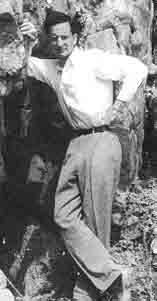
Baigent and Leigh do not stop here, however. They explore at some length where 067final authority actually lies: “To whom, ultimately, were the international team accountable? In theory they should have been accountable to their peers, to other scholars…In reality, the international team seemed to recognize no accountability whatever, except to the École Biblique. And to whom was the École Biblique accountable?”
From their own detailed investigation Baigent and Leigh uncovered what they describe as “a major revelation, not just to us, but to other independent researchers in the field as well.” The École Biblique had direct lines to the pope himself.
The École Biblique has from its earliest days been “close[ly] affiliat[ed]” with the Pontifical Biblical Commission. The authors describe the École Biblique as “an adjunct of the [Pontifical Biblical] Commission’s propaganda machine—an instrument for promulgating Catholic doctrine under the guise of historical and archaeological research.” De Vaux himself was made a consultant to the commission; on his death Benoit was made a consultant to the commission. On Benoit’s death, his successor as head of the École Biblique, was made a consultant to the commission.
The head of the commission is Cardinal Joseph Ratzinger. Ratzinger is also head of another Catholic institution, the congregation for the Doctrine of the Faith. The Congregation has what the authors call a “long-established pedigree”: “In 1542, it had become known officially as the Holy Office. Prior to that it was called the Holy Inquisition.”
While Ratzinger is the executive head of the congregation, the official head is always the reigning pope. Today Ratzinger, as executive head, is called its secretary; “in earlier times [the executive head] was known as the Grand Inquisitor.”
The authors continue: “Of all the departments of the Curia, that of the Congregation for the Doctrine of the Faith is the most powerful. Ratzinger is perhaps the closest to the Pope of all the Curia cardinals.”
“Through the Congregation for the Doctrine of the Faith, Ratzinger’s attitudes determine the attitudes of the Pontifical Biblical Commission, of which he is also head, and filter down from there into the École Biblique.”
Ratzinger is described as “a deeply pessimistic man” who feels that “only the suppression of all dissent can assure [the Church’s] survival as a unified faith. He regards those who do not share his pessimism as ‘blind or deluded.’”
“The Church’s high-level involvement in Dead Sea Scrolls scholarship,” as thus demonstrated, the authors conclude, “must inevitably foster a grave element of suspicion.”
This suspicion is buttressed by attitudes expressed by members of the Dead Sea Scroll editorial team like Monsignor Skehan, who is quoted as expressing the view that “ultimately, the biblical scholar’s work should be guided and determined by Church doctrine and [now quoting Skehan] ‘be subject always to the sovereign right of Holy Mother Church to witness definitively what is in fact concordant with the teaching she has received from Christ.’”
“What if something comes to light which can’t be made thus to conform?” the authors ask. “From Father Skehan’s statements, the answer to that question would seem clear. Anything that can’t be subordinated or accommodated to existing Church doctrine must, of necessity, be suppressed.”
Father Skehan’s position, we are told, “was effectively echoed by Pope Pius XII himself, who maintained ‘that the biblical exegete has a function and a responsibility to perform in matters of importance to the church.’”
With this background, it is easy to understand why “de Vaux wanted, so far as it was possible, to avoid embarrassing the Christian establishment,” the authors state. “Some of the Qumran material was clearly deemed capable of doing precisely that.”
In order to avoid this “embarrassment,” the de Vaux-led team devised and “imposed… a rigid orthodoxy of interpretation” of the scrolls.
“Any deviation [from this interpretation] was tantamount to heresy…[Any scholar] who presumed to challenge [the team’s interpretation] did so at severe risk to his credibility… This orthodoxy of interpretation [has grown] progressively more dogmatic over the years.”
The authors imply that de Vaux and his colleagues might even destroy—have destroyed—some incriminating documents. “What exactly would the École Biblique do if, among the unpublished or perhaps as yet undiscovered Qumran material, something inimical to Church doctrine turned up?” And again: “Even if the Israeli government clamped down and ordered the immediate release of all Qumran material, how could we be sure that items potentially compromising to the Church would ever see the light of day?”
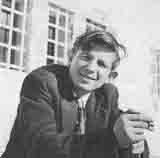
Straying scholars could be kept in line by means less drastic, however, than destroying documents. Take the case of John Allegro, not only the only agnostic on the team but the only member to publish all the scrolls assigned to him. Strugnell then wrote “a long [113-page] and hostile critique” which Robert Eisenman, chair of the Religious Studies Department at California State University in Long Beach, has called a “hatchet-job.” Early on, Allegro “grew exasperated with [the team’s] strained attempt to distance Christianity from the scrolls and the Qumran community” and was soon estranged from the rest of the team, especially after their efforts to prevent his airing views they objected to.

Other critics of the team’s views were likewise silenced.
The chief tenet of the orthodox interpretation of the scroll relates to their date. “The key factor in determining the significance of the scrolls, and their relation, or lack of it, to Christianity, consisted, of course in their dating.” Therefore, in the “consensus view,” as the team’s views are called, “the Qumran texts were seen as dating from long prior to the Christian era.” Anything that “would upset the ‘safe’ dating and 068chronology which the international team had established for the entire corpus of scrolls” was squelched. Once “set safely back in pre-Christian times, [the scrolls became] disarmed of any possible challenge to New Testament teaching and tradition.” In this way the team “effectively defused the Dead Sea Scrolls of whatever explosive potential they might have.” “When expediency and the stability of Christian theology so dictated, contrary evidence was ‘ignored.’”
Another tenet of the orthodox interpretation was that “the scrolls and their authors had to be kept as dissociated as possible from ‘early Christianity’—as depicted in the New Testament.” Thus, in the orthodox consensus, “The beliefs of the Qumran community were presented as entirely different from Christianity.”
To anyone unfamiliar with the Byzantine complexity of the high-stakes struggle for control of the Dead Sea Scrolls, Baigent and Leigh make an appealing—perhaps even convincing—case that the Vatican—or at least Catholic clerics—are suppressing the scrolls for doctrinal reasons. In fact, however, the charge is hogwash.
I confess it seems ungracious of me to say so because Baigent and Leigh make some highly flattering remarks about BAR’s six-year campaign to obtain release of the still-secret scrolls. The authors call us “influential”; they quote us at length approvingly; they say our “contribution has been immense.”
But, still, their central thesis is so badly flawed as to be ludicrous.
Let us begin with a general statement: Catholic scholars are today in the forefront of modern critical biblical scholarship.2 The Catholic Biblical Quarterly is among the most highly respected journals of Biblical scholarship in the world. It ranks right up there with the Journal of Biblical Literature, published by the Society of Biblical Literature. Neither Protestants nor Jews have a journal devoted to Biblical studies comparable to CBQ. The Revue Biblique, published by the École Biblique, is also a highly respected journal that publishes articles by Jewish and Protestant, as well as Catholic, scholars.
This is not to say that Catholic scholars are never biased. They sometimes are—and in subtle ways. But—let’s confess it—so are we all, including agnostics and nonbelievers. All we can do is conscientiously to become aware of our predilections, maintaining continual vigilance to prevent their affecting our scholarship.
Each case of alleged bias must be decided on its own merits. There is today simply no basis for a wholesale condemnation of Catholic Biblical scholarship as biased.
Let’s look at a few more specific facts. As Baigent and Leigh recount, a number of scholars have contested the consensus view. Among these scholars is Robert North, whose position goes to the very heart of the consensus view by questioning the team’s dating of the scrolls. The consensus, North says is “disquieting…It is important to emphasize the frailty of the evidences.” North calls attention to four cases in which de Vaux had been forced to retract his dating. In Baigent and Leigh’s words, “North also found it distressing that, even on so crucial a matter, specialists ‘independently of de Vaux’s influence’ were not asked to contribute their conclusion.”
Baigent and Leigh recognize, however, that North is in fact a Jesuit priest. But it’s worse than that. North is not simply a Catholic priest somewhere out in the boonies who failed to get the word from on high. North is the editor of the Elenchus of Biblica, an annual index of all articles published the previous year that in any way relate to the Bible, and a professor of archaeology at the Pontifical Biblical Institute. As such, he works in Rome, in the shadow of the Vatican itself. If anyone should have gotten the word—if there was a word to be gotten—it should be North.
Or take the case of Father Joseph Fitzmyer, a distinguished emeritus professor at Catholic University of America in Washington, D.C., who has been among the most vocal critics of the team for failing to publish their texts,b who has unsuccessfully pleaded with Milik to release some of the latter’s texts so that Fitzmyer himself could publish themc—how come Joe Fitzmyer never got the word?
But that is by no means the weakest element of the authors’ position. Their entire structure is based on the foolish supposition that independent scholars in this day and age can be cowed into suppressing their views. Baigent and Leigh cite what happened to John Allegro; his publication of the texts assigned to him was savagely reviewed by Strugnell, who spent over 100 pages correcting Allegro’s errors. But this could only be done because Allegro’s reading of the text was so bad; it was not done because Allegro’s interpretations were contrary to the team’s. No doubt Strugnell took a certain glee in correcting Allegro’s errors, but no one I know has provided a substantive defense of Allegro’s work as against Strugnell’s criticisms. Fitzmyer, himself an outsider, has said that Allegro’s work must be used only with “extreme caution.” Moreover, as Baigent and Leigh recognize, Allegro went on to self-destruct by publishing a book entitled The Sacred Mushroom and the Cross3 in which he contended that Jesus had never existed in historical reality, but was only an image evoked in the psyche under the influence of a hallucinating drug, psilocybin, the active ingredient in hallucinogenic mushrooms. Fourteen prominent British scholars repudiated the book in a letter to the London Times. The publisher apologized for issuing the book.
Allegro’s views failed to gain acceptance, but he was not cowed or suppressed. Many other scholars have dissented from the reigning team’s views. Barbara Thiering of the University of Sydney in Australia contends that the Teacher of Righteousness, who figures prominently in Qumran texts, is John the Baptist and Jesus is the Wicked Priest. J. L. Teicher of Cambridge University contends that Paul is the Wicked Priest. Otto Betz of the University of Tübingen suggests that John the Baptist lived at Qumran.d Norman Golb of the University of Chicago argues that the Qumran library really came from Jerusalem and represents the views of mainline Judaism. Lawrence Schiffman of New York University contends that the underlying doctrines of the Qumran sect are not Essenic, but Sadducean.e
Jose O’Callaghan contends that fragments 069of the Gospel of Mark, as well as Acts and Paul’s letter to the Romans, have been found among the texts recovered from one of the Dead Sea Scroll caves. Who is this independent voice challenging the authority of the Vatican’s representatives by suggesting that such late Christian documents have been found at Qumran? He is a Spanish Jesuit! These Catholics—like North, Fitzmyer and O’Callaghan ought to get their act together if they’re going to suppress unorthodox ideas, especially ideas that relate the Qumran documents to the New Testament. To add insult to injury, O’Callaghan publishes his ideas in Catholic journals like Biblica and Civiltà cattolica.
No one can deny all these dissenting scholars a voice. They may be denied a forum at conclaves that the editorial team controls (as at the recent Madrid Conferencef). But their views are made widely known in alternative publications. Whether their arguments will prevail will be determined by their acceptance or rejection by their peers, not by the coercive efforts of the editorial team.

Indeed Baigent and Leigh themselves adopt the views of an independent scholar who vigorously disagrees with the views of the editorial team, Robert Eisenman. According to Eisenman—and Baigent and Leigh—the Qumran leader known as the Teacher of Righteousness is actually James the Righteous, the brother of Jesus, who is referred to in the New Testament. According to Eisenman, James was the leader of the Zealots, a militant Jewish sect that was in the forefront of the First Jewish Revolt against Rome (66–70 A.D.), which effectively ended with the burning of Jerusalem and the destruction of the Temple. Eisenman contends that the Qumran community were Zealots, not Essenes. As such, they were heirs to a long line of Jewish Zadokites—from Ezra, to Judas Maccabee, to John the Baptist, to Jesus and finally to Jesus’ brother James. Paul, in this scenario, was James’ arch-opponent. It was Paul who turned Jesus into a God. According to Eisenman, Paul is “the Liar” of the Qumran texts, the adversary of the Teacher of Righteousness. Paul, according to Eisenman, spent three years at Qumran. The second adversary of the Teacher of Righteousness, the Wicked Priest is, according to this theory, Ananas, the high priest in Jerusalem. Ananas contrived to have James put to death, an event recorded in the New Testament where, again according to Eisenman, Stephen has been substituted for James. At this point, according to Eisenman, Judea rose in revolt. This was the beginning of the First Jewish Revolt against Rome. The Romans dispatched an expeditionary force under Vespasian, and Jerusalem was destroyed. Paul prevailed by creating Christianity. The story of James (and the real, the militant Jesus) was suppressed, until resurrected in Eisenman’s interpretation of the Dead Sea Scrolls.
If Père de Vaux is the Wicked Priest according to the gospel of Baigent and Leigh, Robert Eisenman is the Teacher of Righteousness. Aware that my summary of Eisenman’s view is grossly inadequate, I may well be cast in the role of the Liar.
Truth to tell, no short summary of Eisenman’s views would be adequate. (I have omitted Eisenman’s suggestion that Paul may actually have been a secret Roman agent.) As Baigent and Leigh themselves state toward the end of a 266-page book in large part devoted to Eisenman’s ideas, “In our own pages, it would be impossible to do adequate justice to the weight of evidence Eisenman amasses.” (A few pages later, on the other hand, they say, “Eisenman’s research has revealed the underlying simplicity of what had previously seemed a dauntingly complicated situation.”)
Eisenman’s views may yet prevail (although Baigent and Leigh are badly mistaken when they state that “an ever-increasing phalanx of supporters is gathering around Robert Eisenman, and his cause is being espoused by more and more scholars of influence and prominence.” I do not know of a single scholar who has expressed agreement in print with Eisenman’s scenario.)
But whether Eisenman’s views will ultimately prevail is not the point. What is important is that they are free to make their way in the marketplace of ideas. They have been presented to the public and to his fellow scholars. The first book in which he makes his case (Maccabees, Zadokites, Christians and Qumran) was published by the prestigious scholarly publishing house of E. J. Brill of Leiden in 1983. The second of his books (James the Just in the Habakkuk Pesher) was published in 1985 by—now hold onto your seats, as my grandfather used to say—by one of the Vatican’s own presses, Tipographia Gregoriana! (It was later revised and brought out by Brill). Like Father North, Father Fitzmyer and Father O’Callaghan, the Vatican press apparently failed to get the word as to what was doctrinally kosher and what was not. Otherwise, what was a Vatican press doing publishing Eisenman?
In short, in this day and age, it is difficult to suppress ideas.
Moreover, the team certainly chose a strange tenet to enforce doctrinal purity—an early dating for the scrolls. The team dates the scrolls between about 250 B.C. and 68 A.D. when, according to de Vaux’s interpretation of the archaeological evidence, the Qumran settlement was destroyed by the Roman forces. This early date, according to the accusation against the team editors, distances the scrolls from Christianity. Really? It coincides with Jesus’ life on this earth. If, for example, a virgin birth was attested in a Qumran text dating from the first or second century B.C. instead of the first or second century A.D., would this really matter much in terms of its destructive potential for Christian doctrine?
This leads us to an even more deeply flawed element in Baigent and Leigh’s contention. They assume that something in these arcane ancient scrolls could seriously undermine Christian doctrine or faith. It is hard to imagine what that would be. And Baigent and Leigh do not even hint at its content. Suppose a text recounted a virgin birth that prefigured the virgin birth of Jesus. So what? We already know that virgin birth stories were in the air at the time. Both Judaism and Christianity have survived the discovery of evolution, as well as the discovery of a Mesopotamian flood story that was used by the Biblical writer when he composed the story about Noah. Nor has Jewish or Christian faith been undermined by the fact that archaeologists tell us there was no city at Jericho when Joshua was supposed to have marched around it seven times before the walls came tumbling down.
Allegro once wrote Strugnell: “By the time I’ve finished there won’t be any Church left for you to join.” Clearly, Allegro underestimated the strength of the church’s theological foundations. And so have Baigent and Leigh.
The supreme irony, however, is that the very threat that Baigent and Leigh postulate that the church fears has in fact already occurred—and without the slightest shake of or shock to the church’s foundation. Moreover, it has occurred with a strong assist from Catholic scholars. Baigent and Leigh suggest that the scrolls might contain “something compromising, something challenging, possibly [something that] even refutes, established traditions.” They picture de Vaux and his colleagues as fearful that 070something in the scrolls “might just conceivably demolish the entire edifice of Christian teaching and belief.” This is because, according to our authors, “It had hitherto been believed that Jesus’ teachings were unique.”
Well, yes and no. Modern scholarship has emphasized the connections of Jesus’ teaching with other social and ideological movements of the time. On the other hand, the particular combination of ideas was and is unique.
All scholars are agreed that the Qumran documents are highly significant to our understanding of early Christianity. These documents have added a new dimension to our understanding of Christian origins: Dozens of books and hundreds of articles have been written about the relationship of the Qumran texts to the New Testament. One of the principal conclusions of all this research is that early Christian doctrine and belief systems were not unique. In a forthcoming article in Bible Review, James VanderKam, now of Notre Dame University and one of the most recent recipients of a scroll assignment, draws two principal conclusions from decades of studying the effect of the Qumran texts on our understanding of early Christianity: “(1) the early Church grew upon Jewish soil to a far greater extent than previously supposed; and (2) a larger number of the early Church’s beliefs and practices than previously suspected were not unique to it.”
There has been no resistance, either generally or in Catholic circles, to these conclusions or to the publication of the evidence for it. Yet this is supposed to be the destructive conclusion the Vatican conspiracy is designed to prevent or at least to prevent reaching the light of day.
Baigent and Leigh cite a passage from a still unpublished Qumran text which was printed in BARg that refers to someone who will be called “Son of the Most High” and “Son of God,” echoing names that in Luke 1:32–35 are attributed to Jesus. This is “an extraordinary discovery,” they say. We agree. But we are happy to reveal that this material was provided to us by a prominent Catholic scholar—and the doctrinal supports of the church has not fallen as a result of its publication.
Even more recently, an article has appeared revealing that a Qumran text contained beatitudes that in many respects prefigured the beatitudes in the Sermon on the Mount. The author? Father Emile Puech of the École Biblique.4
Baigent and Leigh accuse the team of editors of “painstakingly conceal[ing]” links between Qumran texts and New Testament events. On the contrary, the implications of the Qumran texts for New Testament studies have been widely and openly debated, with the result that concepts and doctrines once regarded as uniquely Christian are no longer so understood.
Yet there remains a puzzle: Why have the scholars who control the scrolls insisted on keeping so many of them secret? The answer, I am afraid, is not nearly so dramatic as Baigent and Leigh would have us believe. The explanation, alas, is quite pedestrian.
Originally, in my judgment, they kept their goodies secret because of what motivates all monopolists: power. They were exclusive members of what one outsider called a “charmed circle.” They controlled an entire discipline. It was they who were the experts. It was their names that would go down in history as authors of the first editions. It was they who could entice graduate students with an unpublished Dead Sea Scroll to edit as a doctoral dissertation.
More recently, something else has been at work: sheer obstinacy. The scroll editors answer to no one. They are a law unto themselves. They deeply resent the pressure that has been brought on them by outsiders. And not simply by outside scholars, but by untutored nonscholars like the editor of BAR and the general press. The reaction of the editors has been to dig in their heels. In their own terms, they will not be pushed around.
That this, rather than a Vatican-directed conspiracy, lies behind the refusal to grant open access to the unpublished scrolls is demonstrated by the fact that the Israelis, who have recently asserted their control of the scrolls, concur in the monopoly exercised by the scroll editors—provided the team is expanded, as it has been, to include Israelis. Surely the Israelis would not be a part of a Vatican-directed conspiracy. Yet prominent Israeli scholars are part of the consensus view. Baigent and Leigh do not explain how the Israelis were enticed to join a conspiracy whose purpose is to preserve the purity of church doctrine.
To give credit where credit is due, Baigent and Leigh write clearly, and they know how to tell an exciting tale. The previously unpublished pictures in the book are especially interesting—of de Vaux and Milik, of the tall, slender young Frank Cross in elegantly pleated trousers leaning nonchalantly against a rock scarp, of Father Starcky celebrating mass as the sun 071rises above the Qumran ruins before the day’s excavation.
The book contains some other nuggets. Here are two that will have to suffice:
In an interview in 1968, de Vaux, his face flushed, called the Israelis “Nazis.” Prior to 1967, he “had refused to allow any Jews to work on the scrolls in the Rockefeller.” According to Magen Broshi, curator of the Shrine of the Book in Jerusalem where most of the long, intact scrolls are housed, “de Vaux was a rabid anti-Semite…but,” Broshi adds, “[he] was the best partner one could ask for.” This sounds like an unbelievable statement for an Israeli to make were it not for the fact that this is consistent with Broshi’s position following the publication of Strugnell’s anti-Semitic interview. (Said Strugnell: “Judaism is a horrible religion,” etc.). Broshi brushed this off with the statement that he had “known for 20 years that Strugnell was an anti-Semite,” but then added that this was “entirely irrelevant.” One is left to wonder what made de Vaux such a terrific partner, considering that no Jew had yet been given a scroll assignment of the materials de Vaux controlled when he died in 1971 and access even to photographs of the documents was tightly limited and frequently denied during his long tenure as editor in chief. Moreover, de Vaux failed to make good on the promise he gave Israeli archaeologists Yigael Yadin and Avraham Biran in 1967 that the Cave 4 scrolls would be speedily published. It may be difficult for Broshi to imagine, but I can easily conjure up a better partner than this.
Baigent and Leigh’s book also contains a priceless description of their attempt to obtain information from the Israel Department of Antiquities (now the Israeli Antiquities Authority). Baigent arranged to see the director of the department, General Amir Drori, but when Baigent arrived he was shunted off to Mrs. Ayala Sussman whom he understood “to preside over the sub-department in charge of the Qumran texts.” In fact, Mrs. Sussman handles public relations and serves as secretary of the Israel Dead Sea Scroll oversight committee that was activated in the fall of 1989. Here is the author’s description of Baigent’s meeting with Mrs. Sussman:
“She clearly, and perhaps understandably, regarded it as an unwelcome intrusion on her already busy schedule. While being scrupulously polite, she was also therefore impatient, dismissive and vague, vouchsafing few details, endeavoring to get the conversation over with as soon as possible. Baigent was also, of course, polite; but it proved necessary for him to become tiresomely insistent, conveying the impression that he was prepared to wait in the office all day unless some answers to his queries were forthcoming. Eventually, Mrs. Sussman capitulated.
“Baigent’s first questions concerned the formation and purposes of the [Israeli] ‘Oversight Committee.’ Mrs. Sussman, at that point, apparently regarding her interviewer not as a researcher with some background in the subject, but as a casual journalist skating on the surface of a story, imprudently confided that the committee had been formed to deflect criticism from the Department of Antiquities. In effect, Baigent was given the impression that the committee had no real interest in the scrolls themselves, but was merely a species of bureaucratic screen.
“What was its nominally official role, Baigent asked, and how much actual authority did it exercise? Mrs. Sussman remained vague. The committee’s job, she said, was to ‘advise’ Amir Drori.
“What about BAR’s suggestion, Baigent asked, and the resolution adopted by the convention [of Dead Sea Scroll scholars] at Mogilany [Poland] two months before of making facsimiles or photographs available to all interested scholars? Mrs. Sussman’s gesture was that of a woman dropping an irrelevant letter into a wastepaper basket. ‘No one discussed it seriously,’ she said.”
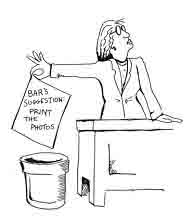
The next day Baigent spoke to Hebrew University Professor Jonas Greenfield, a member of the oversight committee:
“Baigent decided to put what Ayala Sussman had said to him—that the committee had been formed primarily to deflect criticism from the Department of Antiquities. Perhaps this would elicit some reaction.
“It most certainly did. The next morning, Mrs. Sussman telephoned Baigent. Sounding somewhat rattled at first, she stated she was annoyed with him for telling Professor Greenfield she had made so dismissive a remark. It wasn’t true, she protested. She couldn’t possibly have said anything like that. ‘We are very keen,’ she stressed, ‘for this committee to do things.’ Baigent asked if she wished him to read back to her his notes; when she said yes, he did so. No, Mrs. Sussman insisted: ‘The committee was formed to advise the Department [of Antiquities] on sensitive matters.’ As for her dismissive remarks, she had thought she was speaking ‘off the record.’”
Another member of the Israeli oversight committee Professor Shemaryahu Talmon of Hebrew University candidly told the authors that the scholars who are monopolizing the scrolls are, in effect, “a cabal,” then adding, “The scrolls are a fief”—a shrewd observation. It is time the scrolls were freed from their fiefdom.
A book that will soon be available in the United States was recently published in England under the title The Dead Sea Scroll Deception by Michael Baigent and Richard Leigh (Jonathan Cape, 1991).1 The book’s thesis is that the Vatican is suppressing the Dead Sea Scrolls because they will undermine vital Christian doctrine. The authors’ first bit of evidence is the unconscionable publication delays: Of over 500 texts found in Qumran Cave 4 beginning in 1952, only approximately 100 have been published after nearly 40 years. (The 300 texts from other caves have almost all been published.) Even more […]
You have already read your free article for this month. Please join the BAS Library or become an All Access member of BAS to gain full access to this article and so much more.
Already a library member? Log in here.
Institution user? Log in with your IP address or Username
Footnotes
Avi Katzman, “Chief Dead Sea Scroll Scholar Denounces Judaism,” BAR 17:01. An earlier publication in Hebrew appeared in Ha‘aretz, a Tel Aviv daily.
Joseph A. Fitzmyer, “A Visit with M. Josef Milik,” BAR 16:04.
Otto Betz, “Was John the Baptist an Essene?” Bible Review, December 1990.
Lawrence H. Schiffman, “The Significance of the Scrolls,” Bible Review, October 1990.
“BAR Editor Unwelcome in Madrid—Disinvited to DSS Congress,” Queries & Comments, BAR 17:03.
Endnotes
The book is scheduled to be published in the United States by Summit Books (a subsidiary of Simon & Schuster) in January 1992.
The New Jerome Biblical Commentary states: “Catholic critical scholarship from DAS [Divino afflante Spiritu] until 1970 was marked by intensive growth.
“Catholic biblical scholars received official church encouragement through two primary documents the PBC’s [Pontifical Biblical Commission’s] ‘Instruction on the Historical Truth of the Gospels’ (1964) and Vatican II’s Dei Verbum (Dogmatic Constitution on Divine Revelation, 1965). The former document, in particular, recognized that the Gospels consisted of several layers of tradition and thus are not literal or chronological accounts of the life of Jesus. This position confirmed the results of biblical scholarship while setting the stage for further developments in the scientific, critical study of the NT [New Testament] among Catholic biblical scholars.
“Catholic NT scholarship increasingly made its own mark in the study of the NT. It succeeded in convincing more intelligent Catholics that the ultraconservative biblical positions of the past were no longer tenable and that the new approaches had values of their own which could feed worship and spirituality. It incorporated the results of scientific NT study into the discussion of issues with dogmatic implications, e.g., the limitations of Jesus’ knowledge regarding himself, the future, and the church, qualifications in the reliability of Acts as a guide to how the church historically emerged; the extent of creativity exercised in the formation of the Gospel tradition; the limited historicity of the infancy narratives.” (“Modern New Testament Criticism,” by John S. Kselman, S.S., and Ronald D. Witherup, S.S., in The New Jerome Bible Commentary, ed. Raymond Brown, S.S., Joseph Fitzmeyer, S.J., and Roland E. Murphy, O. Carm. [Prentice-Hall, 1990], pp. 1142, 1143.)

